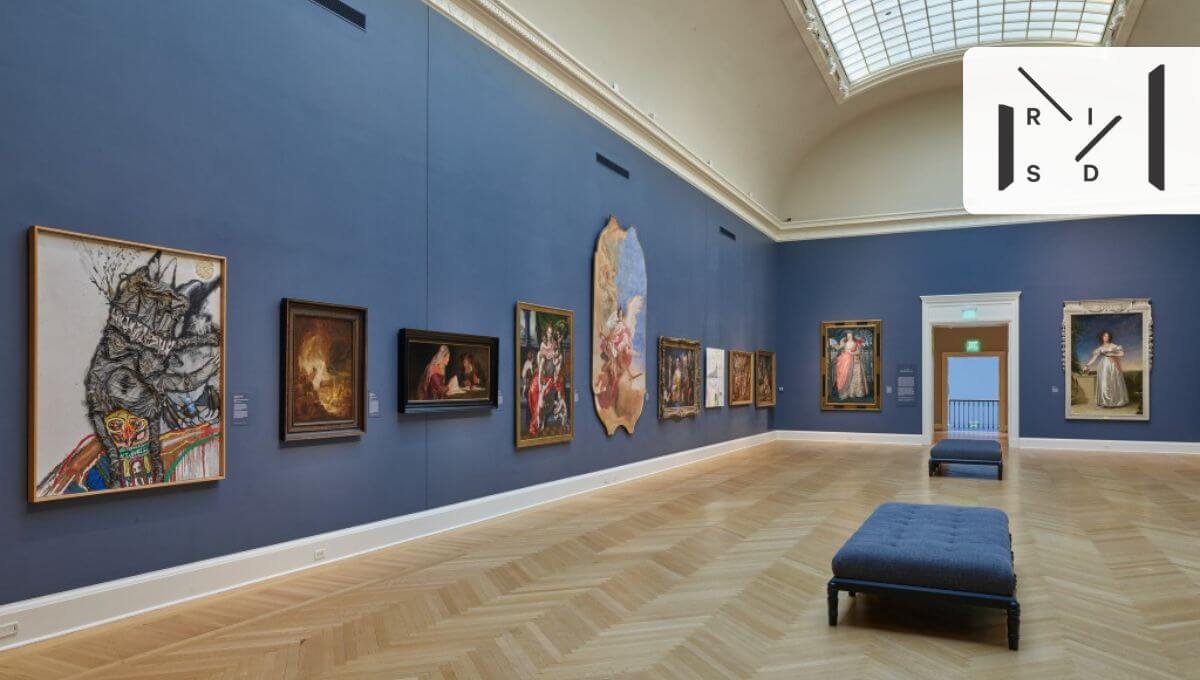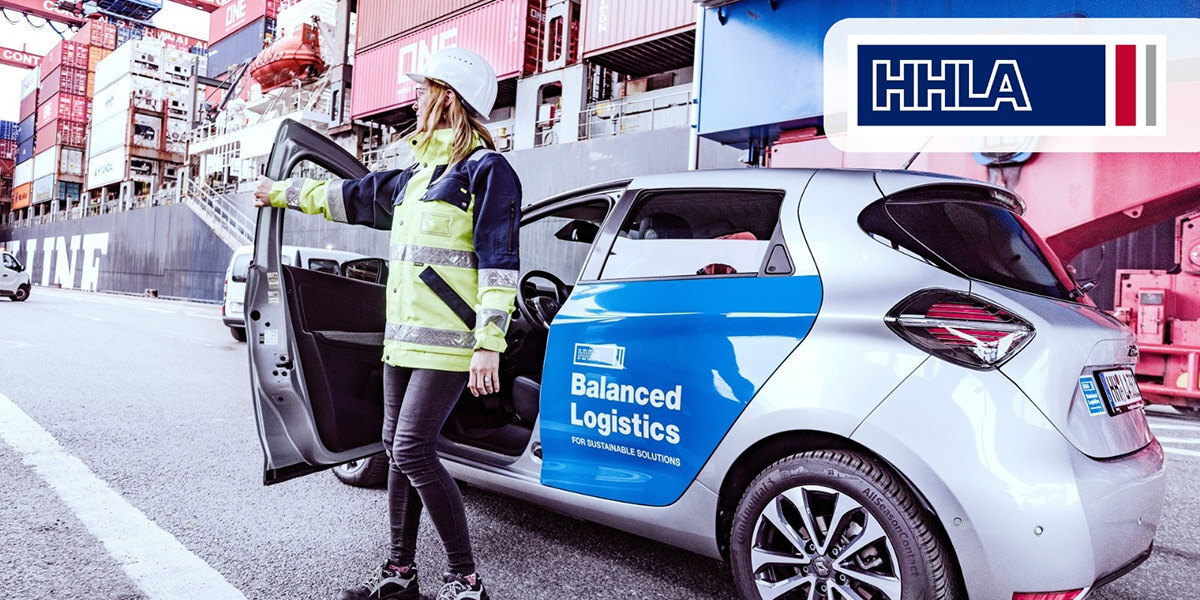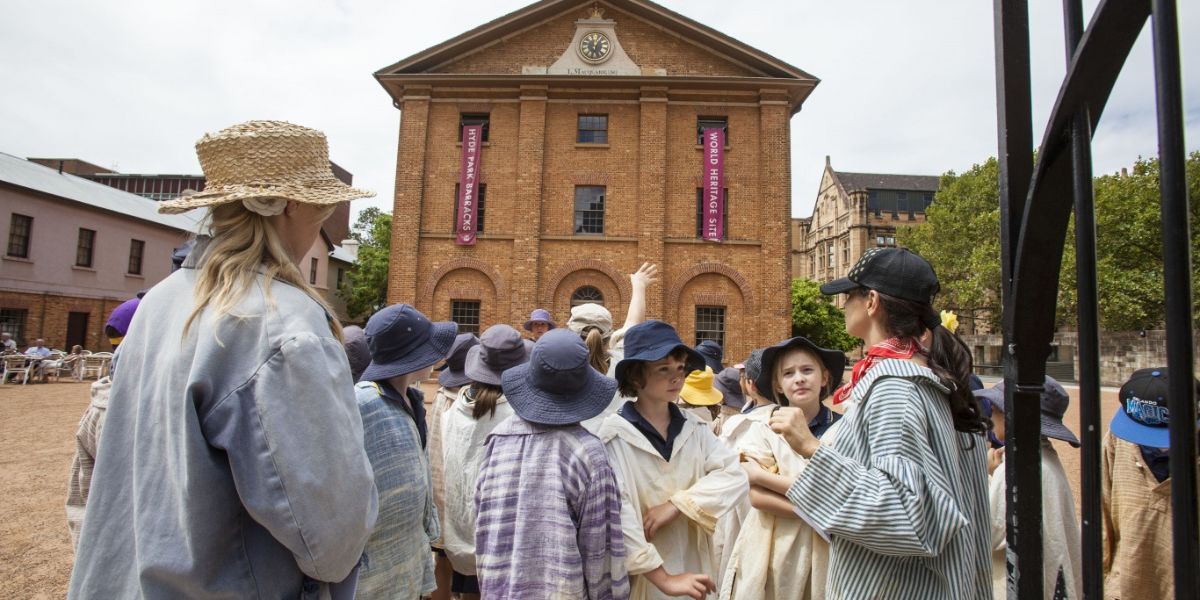
Photo by ©Sydney Living Museums
5 Reasons Why Sydney Living Museums Moved to DAM in the Cloud
Sydney Living Museums (SLM) cares for a group of 12 of the most important historic houses, gardens, and museums in New South Wales (NSW), Australia. The primary goal of the SLM is to preserve and showcase Sydney’s living history.
SLM offers a dynamic and diverse program of exhibitions, research, and events such as walks, talks, and tours so that the visitors can experience Sydney's past as if they had lived it themselves.
SLM has used the Fotoware Digital Asset Management (DAM) solution to store and manage its vast collection of heritage archives over the past 14 years. SLM recently migrated its collection to a cloud-hosted solution, which has resulted in improved processes for file ingestion as well as the discoverability and delivery of digital assets.
Last year SLM won the Media Management Award showcasing scalable, streamlined, and integrated workflows as a pioneer in the cultural sector. We caught up with Holly Schulte, Project Officer at SLM Collection Digitisation, to hear more about how moving to the cloud has impacted SLM.
What is your role in Sydney Living Museums?
As Curator of Digital Assets, I explore the extraordinary potential of digital imaging technology alongside the enduring appeal of analog photographic collections.
I joined Sydney Living Museums in 2006 to establish a project to digitize, manage, and care for the NSW Police Forensic Photography Archive. My role has expanded to lead the Digital Assets Team, manage a program of collection digitization, and administer the Fotoware DAMS for collection and corporate assets.
I work with colleagues across collections and digitization processes: researching, cataloging, and facilitating file management and delivery. I manage an image collection database and train others in digital asset workflows. I work with curatorial and audience focus teams and contribute to public programs and themed exhibitions. I also commission and take an active role in photo shoots: ‘There’s plenty of teamwork involved in everything from assessing the stability of an object to deciding how an object can be safely and accurately digitized.''
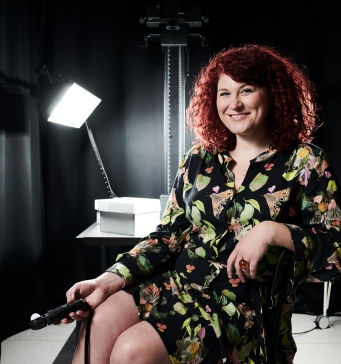 Photo: Holly Schulte, Curator Digital Assets at Sydney Living Museums ©Sydney Living Museums
Photo: Holly Schulte, Curator Digital Assets at Sydney Living Museums ©Sydney Living Museums
What were the challenges in the on-premise environment, and why has SLM decided to move to the cloud?
The challenges with the on-premise collection at SLM included maintaining servers and accommodating required data growth. Additionally, resources were required to administer, manage, maintain, and backup the growing collection of data. Moving to the cloud has elevated the staffing and hardware resources internally. The cloud also allows for data growth.
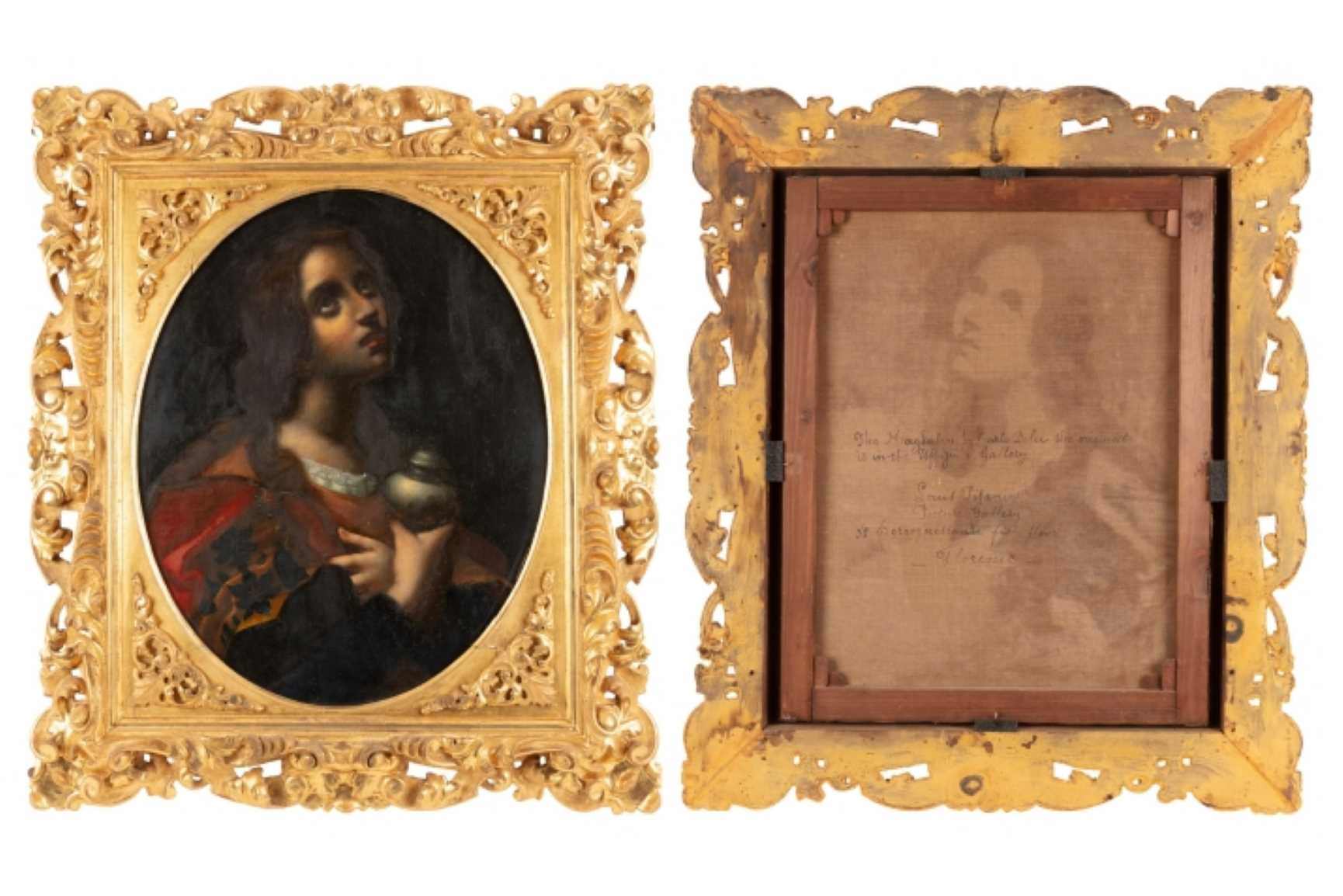
Photo: Verso and front of oval oil painting of Mary Magdalene in a carved wood, foliate and gilt frame, Louis Pisani, Florence, 1876 (Rouse Hill Estate). Photos © Jamie North for Sydney Living Museums
What are the biggest benefits of digitizing collections?
We have used Fotoware for over 14 years and recently moved our collection and software from on-premise to a cloud-hosted solution in MS Azure. Digitizing collections offers a myriad of opportunities for accessibility: we have 12 unique properties spread across Sydney and NSW. Even when you visit them, you can’t see everything in their collections as many objects are in storage or bedroom drawers. Digitization makes these objects visible. Because we’re not bound by the physical location of these items, the opportunities for virtual storytelling and sharing are infinite – for example, we could digitally group objects from our properties to showcase 200 years of kitchenware or furniture. Digitization is also a useful tool for monitoring the collection: ‘Photography records an object at a moment in time and we can use it to assess the object’s condition’.
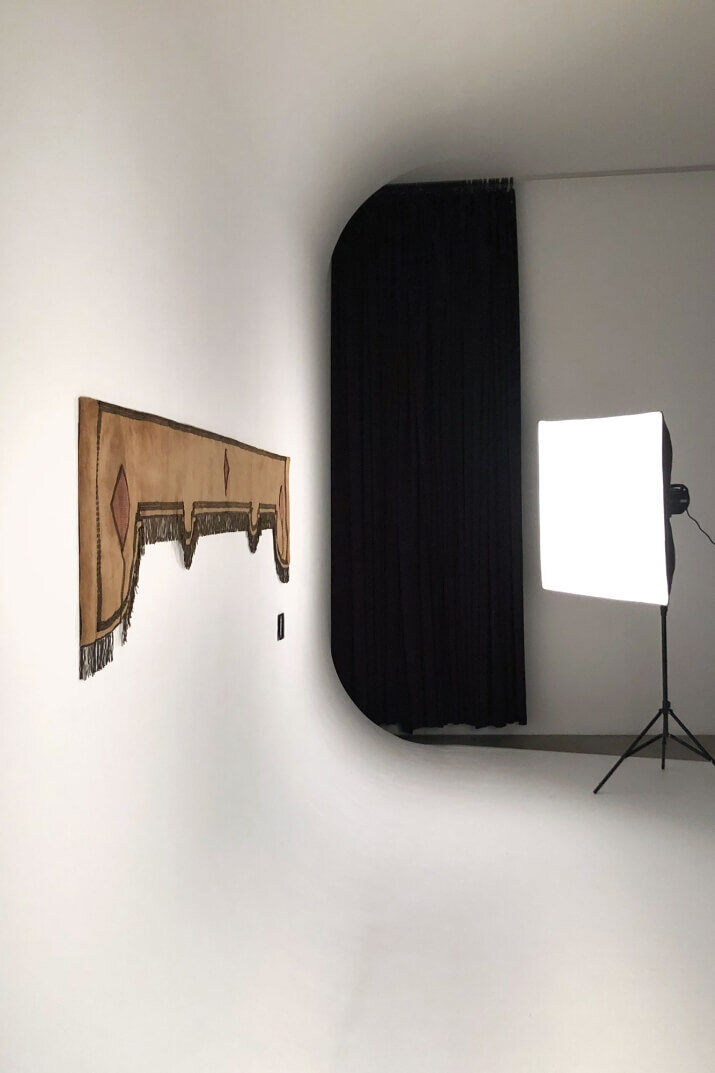
Photo: Curtain valance of beige brushed velvet, trimmed with a border of gold gimps and metallic bullion fringing with diamond-shaped woven cotton appliqués being photographed in professional studio cyclorama. Photo Holly Schulte © Sydney Living Museums
What are the impacts of moving to the cloud in Sydney Living Museums?
1. Increased discoverability to a wider audience
Moving to a cloud-hosted solution has given us the opportunity to expand the reach and availability of digital assets. Now, they are discoverable by a wider variety of users: internal staff, staff working remotely, and those external to the organization. Our assets can be located, accessed, and shared far more efficiently. Users are getting better search results and have confidence in the collection of related metadata. Most importantly, we are getting greater value from our assets as they are more discoverable. External contributors, collaborators, and media are securely accessing images with metadata through Fotoware via the cloud.
2. AI tagging
We have adopted AI tagging on digital assets to further improve the overall discoverability of assets in the collection. AI tagging is embedding textual information, created without relying on manual data entry by users.
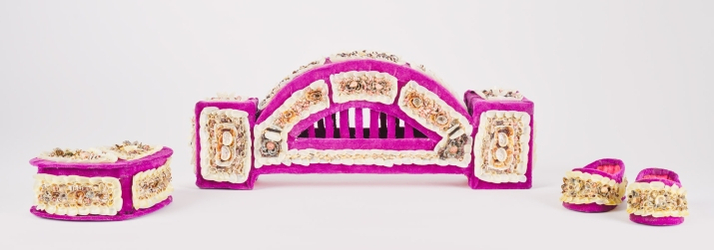
Shellworks, comprising a model of the Sydney Harbour Bridge, a heart-shaped jewellery box and a pair of baby slippers, by Gloria Ardler, c1990 (Museum of Sydney). Gift of the artist, 2004. Photo © Joshua Morris for Sydney Living Museums. Artwork © Gloria Ardler
3. Simplified workflows
Editors and ‘search/share’ users have expressed the positive impact of our updated Fotoware solution. As Fotoware is in the cloud, ingesting and sharing assets internally and externally is streamlined. The simplified workflows combined with time-saving improvements in ingestion and discovery workflows mean users have more time to spend on core tasks. Additionally, streamlined ingestion and archiving processes have simplified the approval, description, archiving, and release of assets, all within the system.
External photographers are now uploading directly to the system and files are automatedly tagged, renamed, and have technical details recorded. This has greatly reduced the need for file handling, description,and control when releasing outside the system.
4. Integration with 3rd party systems
The integration with information systems, such as library catalog, FIRST, and Vernon (a collection management database), means we don’t need to create duplicate assets and datasets. This recognizes the importance of data integrity and streamlines workflows and the sharing of collection data between Fotoware and our information systems.
Integration with social media channels has removed the need to download and upload derivatives, reducing workload. We separated our ‘Collection’ and ‘Corporate’ assets to better manage user and metadata requirements and integration. In addition, we can track what assets have been used and where, and ensure our assets are always used in the right way.
5. Secured asset management
Our Fotoware solution demonstrates responsibility by offering a secure cloud-based operating environment, quality digital assets with layers of discoverable metadata and continuous integration with our information systems. This ensures users have the most up-to-date details about historical objects. We are keeping digital assets secure by allowing external contributors to upload content directly and by sharing content externally within the controlled framework of Fotoware. As the solution continues to evolve, we are considering the expansion of Fotoware at SLM by adding a Digital Preservation Framework.
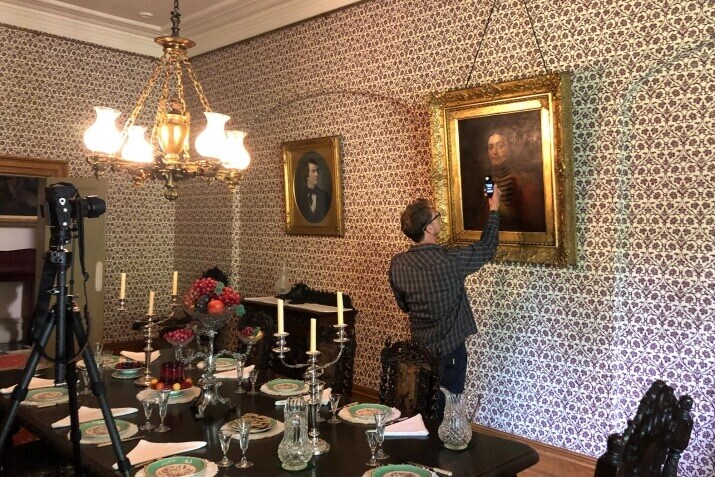
Photo: Photographer Chris Bennett takes a light meter reading in preparation for photographing a portrait of Major D’Arcy Wentworth, c1825 in the Vaucluse House dining room. Photo Holly Schulte © Sydney Living Museums
What are the next steps?
Migration to the cloud environment has also provided the opportunity to expand our assets as we move to consider ingestion of AV formats and video, requiring increased data storage. The scalability of the cloud environment and the ease at which it can be safely accessed remotely means we are already considering how to grow our DAMS to support other business needs. We are looking at pathways for publishing content through the DAMS to the collection and library catalog, and to the website.
Do you want to set up your own workflows for your team? Here are 7 Digital Asset Management workflow examples from our customers, and step-by-step guides that help you set up your own workflows that will help your team work smarter. Download the free e-Book now!
Want to learn more?
Talk to one of our experts to discover how we can streamline your organization's content workflows.

